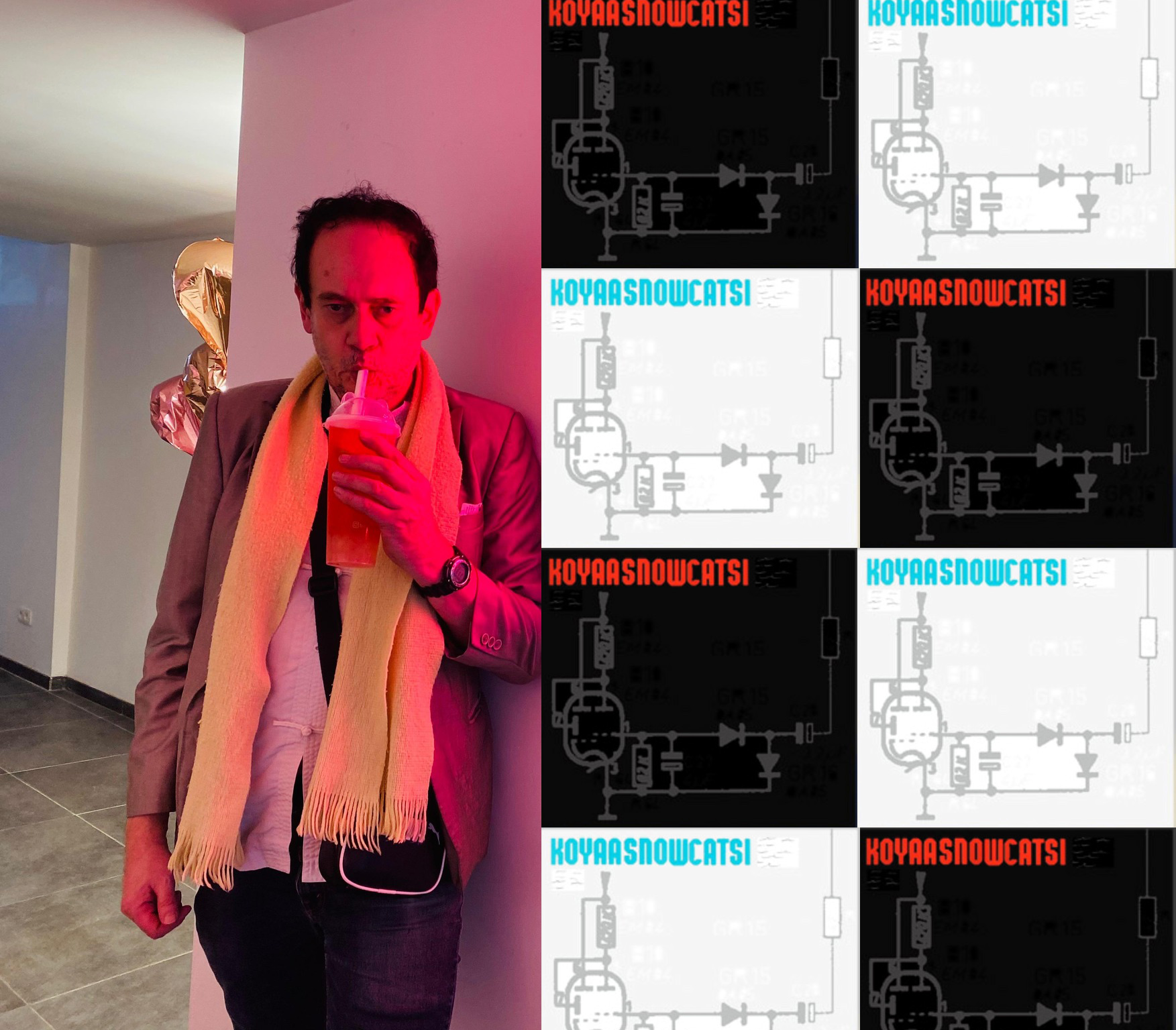By Keith Walsh
When it comes to Gilles’ Snowcat, the Belgian singer/songwriter, one can expect the unexpected. I’ve known him for eight years, yet he just recently told me about his interpretation of Philip Glass’ popular film soundtrack for the experimental film of 1982, Koyaanisqatsi. Turns out Gilles’ Koyaasnowcatsi been sitting in his archives for more than a decade. And despite him destroying the master recordings, or so he says, the quality of this newly released ten-piece reinterpretation/reimagining is quite clear. (For more info, please read my interview with Gilles at Popular Culture Beat).
Track By Track
The opening track, “Koyaanisqatsi”, is dark and moody, and uniquely Snowcat, putting an art rock ballad sound to Glass’ somber piece. Then comes “Organic,” a beautifully minimalistic piece, just a pristine string sound, some deep bass and a lonely arpeggio. Gilles’ voice is here and there, adding a human touch that accentuates the warmth of the melodies, played by hand, even in the case of some of Glass’ characteristic arpeggios.
“Cloudscape” promises something uplifting, with a bouncy electronic piano phrase, but it never delivers, instead developing into a minor key and a lyrical representation of thematic darkness. “Resource” is sublimely mechanical, ethereal and beautiful, before getting darkly suggestive, then opening up into a majestic theme. ”Vessels” is somewhat lyrical and translucent, based mainly on a flanged analog string sound then developing into something reminiscent of Glass’ 1981 album Glassworks.
“Pruit Igoe”(sic) has a cathedral like sound, building into arpeggiated synth pop, as a musical commentary on the famed St. Louis housing project designed by Japanese-American architect Minoru Yamasaki. “Slo Mo People” provides further commentary on the interaction between we and our environments, in a strikingly beautiful way. Not knowing much about the film, nor about the Philip Glass soundtrack, I hear optimism and a sense of awe within Snowcat’s version.
“The Grid” is a somber, reflective piece that evolves into something about the mysteries and potential of technology. Featuring flanged strings in the high cello range, the brief “Microchip” is and mysterious as the electronic component that inspired the song. As the final piece, “Prophecies” looks backwards into reflection, and hopefully towards potential. In this last piece, the earthy baritone of Gilles Snowcat’s voice finds an ideal vehicle. As the word Koyaanisqatsi means Life Out Of Balance in the Hopi language, Snowcat’s vocalizations here embody all the hope and occasional terror that accompanies the human voyage through the changes of history. Koyaasnowcatsi is a deeply spiritual album, one I give Synthbeat’s highest recommendation.
Snowcat’s Koyaasnowcatsi features 10 of the 13 tracks from the complete 2009 release (there was also a 1998 version following the original 1983 release). It’s a mature set of interpretations from a singer/songwriter who often busts out masterful tunes, including his share of instrumentals. Koyaasnowcatsi has the advantage over the original of including more human playing – Snowcat’s deft keyboard skills – rather than the mechanical repetition of Glass’ original. Being a bootleg, there’s some mystery about the recording medium and the version we have now. To find out something about these details, please read my interview with Gilles Snowcat at Popular Culture Beat dot com.
‘Koyaansnowcatsi’ Streaming Links Compiled At Songwhip
Gilles Snowcat dot com
Gilles Snowcat ‘Koyaasnowcatsi’ at Spotify
Gilles Snowcat on Bandcamp
Gilles Snowcat Videos At Bing.com
Philip Glass dot com
finis
